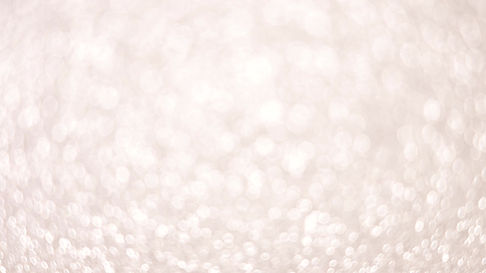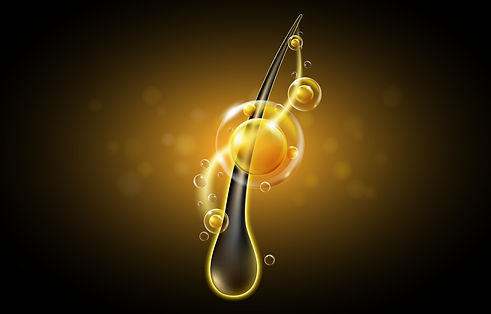Not only do i provide treatments for hairloss for those who need more invasive help I work exclusively with Statera Health and Wellness to do bloodwork, hormone therapy for hairloss and hairloss treatments that can't be utilized in the salon. https://staterahealthspa.com/ I also have a dermatologist I work with who is very Educated in hairloss. If treatments aren't for you we absolutely understand and have serval methods of extensions such as int
We provide natural options as well as treatments for all types of hair loss, and also can provide several options for those who need more invasive help. I work exclusively with Statera Health and Wellness to do bloodwork, hormone therapy, PRP for hair loss and other hair loss treatments that can't be utilized in the salon https://staterahealthspa.com/ I also have a dermatologist I work with who is very Educated in hair loss.
scalp analyses
what we can see through the scope of a scalp analysis
-
n
-
-
-
-
-
-
-
-
-
-
-
inflamed scalp
-
the minituarisation of follicles, which is the shrinking of hair follicles
-
the lack of new hair growth
-
excessive shedding
-
thick buildup on the scalp
-
Hair Density
-
Hair Thickness
-
Keratin on Scalp
If treatments aren't for you we absolutely understand and offer serval methods of extensions for those who aren't actively loosing, such as intergraded mesh that are made for those who can not use regular methods .


Scalp exfoliation removes buildup that can clog hair follicles and impede hair growth Creating micro-injury on the scalp, can rejuvenate hair follicles and promote growth. This can be effective for conditions like alopecia areata and pattern

30 million woman in the united states suffer from hair loss Over 55% of woman will experience some level of hair loss throughout there life, and by the age of 70 the percentage jumps to 80% For many women, hair loss can lead to a profound sense of loss and can cause them to question their identity, femininity, and overall sense of self. Hair has long been associated with beauty and femininity, and its loss can leave women feeling disconnected from their own sense of womanhood. It can shatter their confidence and undermine their self-esteem, affecting every aspect of their lives, from personal relationships to professional endeavors Unfortunately, the internet is filled with misleading advertisements, unverified claims, and potentially harmful products that exploit the desperation and emotional distress experienced by those suffering from hair loss. This is why we only use evidence based clinical studies to create our methods to help woman who suffer from hairloss.



Microcurrent therapy has shown to increase hair growth through the creation of new hair follicles, as well as to boost protein signaling, which also tells hair follicles to grow and produce more. promote hair growth:

hFGF10 oil Targets hair follicles and accelerates hair regeneration. It significantly improves hair regeneration without any significant toxicity. hFGF10 inhibited dihydrotestosterone (DHT a hormone that causes hairloss) it provides a therapeutic calming environment, targeting hair follicles and reducing microinflammation to accelerate hair regeneration in AGA.




Light Therapy Red light primarily promotes hair growth by reducing inflammation and increasing cell energy blue light can help with hair density and shaft diameter. It can regulate sebum production on the scalp, potentially reducing inflammation and contributing to a healthier hair growth environment.



Minoxidil Lengthens and prolongs the anagen (growth) phase of the hair cycle, and increases blood flow to the follicle.



GHK-Cu and AHK-CU (copper peptide) has the potential to promote hair growth by stimulating hair follicles, enhancing hair thickness, and potentially helping to extend the hair growth phase, making it a promising ingredient for addressing hair loss and thinning hair. GHK-Cu works by improving blood circulation to the scalp, which delivers essential nutrients to hair follicles, promoting healthy hair growth. It can help thicken hair strands, increase hair density, and reduce hair shedding. This all natural option allows us along side deep scalp stimulation to deliver 100% pure medical grade peptides to the scalp for unparalleled treatment.



Ultrasound waves can promote hair growth by increasing blood flow and stimulating hair follicles. Ultrasound treatments are non-invasive and can be combined with topicals to enhance their effectiveness. Also helps to open up the epidermal tissue in the scalp to allow for nutrients to reach the hair follicles easier. This allows for the growth of stronger hair, as well as improves anchoring of the hair to the follicle – reducing shedding.When combined with topicals like Minoxidil, ultrasound canincrease the rate of growth by 67% compared to using Minoxidil alone. Combining ultrasound with finasteride topically can increase up theanagen/telogen ratio by 5x in comparison to using topical finasteride alone in androgenic alopecia


Zinc Thymulin is vital in hair growth and has shown to improve auto immune disease. It was tested in the treatment of hair loss. The study indicated that topical treatment with zinc thymulin significantly increased hair growth over 6 months; further, there were no systemic or local side effects from the treatment. The zinc thymulin metallo-peptide optionally also improves endogenous hair pigmentation. For example, by stimulating melanogenesis in grey or greying hair.



Retinols Studies have shown that retinol, a form of Vitamin A, can potentially promote hair growth by stimulating the hair follicle growth cycle, particularly by extending the anagen (growth) phase, potentially converting vellus (fine) hairs into thicker terminal hairs, and even working synergistically with other hair growth treatments.


_.png)
Exosomes are tiny, naturally occurring vesicles released by cells that act as messengers, transferring proteins, lipids, and genetic material (like mRNA and microRNA) to other cells, influencing their behavior. They play a crucial role in cell-to-cell communication and are being studied for their potential in various applications, including wound healing, tissue regeneration, and as a delivery system for therapeutic molecules. This is used as a hair loss treatment that uses your own-skin cells to regenerate hair follicles by you own hair cells to communicate to other hair cells that are dormmate to regenerate and grow. This is especially useful for people with hair loss genetics who aren't responding to other therapies. It's also a great option for thicker hair types that aren't interested in undergoing major hair loss treatments or for extreme hair loss. it has also shown in studies the help with melanin production in hair follicles, potentially helping prevent loss of pigmentation(grey hair)
Alopecia is the medical term for hair loss. There are so many types you can learn about below. You can suffer from more than one type at a time and anyone even children can experience it. The more knowledge we have the better we can learn how to effectively help those who are effective by hair loss.
Telogen Effluvium Vaccinations, crash diets, physical trauma (such as a car crash), and surgeries can temporarily send a proportion of scalp hair follicles into hibernation. As the body recovers from these shocks, TE subsides, and new hair growth resumes. Certain drugs, especially antidepressants, can also induce TE. Switching to a different medication might resolve this issue.
Anagen Effluvium This condition often arises in people taking cytostatic drugs for cancer treatment or those exposed to toxic substances like rat poison. Unlike telogen effluvium, the follicles don’t enter a telogen resting state but essentially freeze in time. Hair fibers shed quickly, often appearing as dystrophic anagen hairs with a tapered or feathered root end.
Alopecia Areata In AA, an individual’s own immune system targets hair follicles instead of bone joints. While extreme stress might trigger AA in some individuals, recent research highlights genetic involvement as well as Hormones, allergies, viruses, and even toxins could contribute. Likely, a combination of these factors activates AA in a given individual.
Scarring Alopecia (Cicatricial Alopecia) The common underlying theme is the potential for permanent and irreversible destruction of hair follicles, leading to their replacement with scar tissue. Dermatologists and pathologists examine the biopsy for indicators such as follicle destruction, deep scar tissue, and the presence and location of inflammation relative to hair follicles.
Congenital Hypotrichosis Hypotrichosis describes a situation where there wasn’t any hair growth in the first place. Hypotrichoses (plural) are conditions that affect individuals right from birth and usually stay with them throughout their lives. The majority of hypotrichoses are due to genetic aberrations or defects of embryonic development. There are hundreds of types of genetic hypotrichoses. Often, affected individuals have other physical or mental problems beyond a lack of hair.
Traction alopecia This can result from factors like tight hat bands, tight ponytails, cornrow hair styles, improper extension installation, and any other practices that exert tension on hair roots. Prolonged traction alopecia, where the same hair is repeatedly pulled out, can lead to permanent hair follicle damage and permanent hair loss.
Trichotillomania A condition in which affected individuals compulsively pull out their own hair. While scalp hair is often targeted, individuals may focus on eyelashes, eyebrows, pubic hair, or any hair-bearing area. Debate exists as to whether trichotillomania is a habit akin to nail biting or a more complex psychological issue.
Ringworm, Folliculitis, Piedra (Trichomycosis Nodularis), Demodex folliculorum, and Seborrheic dermatitis Ringworm Ringworm has nothing to do with worms; it is actually a fungal infection. Ringworm is primarily an infectious skin condition that can occur anywhere on the body. If it develops on the scalp, it can cause patches of hair loss. Folliculitis is usually due to a bacterial infection, most commonly by Staphylococcus aureus.
Piedra (Trichomycosis Nodularis) is a condition where hair fibers are infected by a fungus. Seborrheic dermatitis is not an infectious disease, although it can involve infection. It is primarily a skin condition, but it can also lead to temporary hair loss if it occurs on the scalp or other areas with terminal hair. The dermatitis manifests as scaly, sometimes oily, inflamed skin that can be itchy or even painful.
References
https://pubmed.ncbi.nlm.nih.gov/3063367/https://www.novique.com/wp-content/uploads/2022/05/Zinc-Thymulin.pdf https://pmc.ncbi.nlm.nih.gov/articles/PMC8942741/ MDPI
https://www.mdpi.com/2076-3417/12/1/217#:~:text=*%20Blue%20light%20(Figure%201C)%2C%20with%20a,of%20the%20cuticles%2C%20and%20promotes%20pain%20relief. International library of Medicine
https://pubmed.ncbi.nlm.nih.gov/35150848/ Yalemedicine.org International Journal of Molecular Sciences
ISHRS https://ishrs.org/patients/treatments-for-hair-loss/medications/minoxidil/
National library of Medicine https://pmc.ncbi.nlm.nih.gov/articles/PMC10643103/
I can not diagnose or confirm treatment




